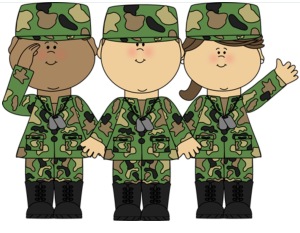30 Nov 2016 1 Comment
in Awareness, children, Family, fun facts, Love, mystery, photo of the day, Quotes, this day in history, Thought for the Day., Uncategorized Tags: december, november
29 Nov 2016 2 Comments
in children, daily prompt, Family, fun facts, Love, nature, Photo Challenge, this day in history, Thought for the Day., Truth, Uncategorized Tags: flake, love, snow
Macy’s Thanksgiving Day Parade
24 Nov 2016 Leave a comment
in Awareness, children, daily prompt, Family, fun facts, holiday, mothers, My Thoughts, mystery, photo of the day, Quotes, this day in history, Thought for the Day., Uncategorized Tags: new york, parade

Thanksgiving Day means homes filled with the scent of roasting turkey and warming pies, family and friends gathering to feast (and maybe argue over politics) and, of course, the Macy’s Thanksgiving Day Parade. But how much do the expected 50 million television viewers and 3.5 million paradegoers know about this tradition, which is celebrating its 90th anniversary this year?
Not much, according to Stephen Silverman, author of the recently released Macy’s Thanksgiving Day Parade: A New York City Holiday Tradition, although he calls the parade as “traditional as a turkey in the oven.” So before you tune in for the three-hour event or head into the city to see the parade up close and personal, here are some fun facts and milestones about the spectacle that has ushered in the holiday season across America for close to a century.

The idea for a holiday parade actually started with the workers of Macy’s, many of whom were immigrants and wanted to “show their gratitude for being in America,” explained Silverman, whose book showcases contemporary photos by Matt Harnick and some dreamy vintage prints from the Macy’s archives. Though these workers’ original idea was to create more of a holiday market or street fair akin to holiday traditions in their native Europe, the first parade in 1924 started a brand-new Thanksgiving tradition in America. Today, hundreds of Macy’s employees and volunteers are still integral to running the show, said parade executive producer Amy Kule: “The clowns and balloon handlers that you see, the majority are Macy’s employees.” And the lucky children who get to ride on the floats? “Most are kids of employees,” Kule said.
90th anniversary?
Though this year marks 90 parades, it’s not 90 parades in a row. The Macy’s parade started in 1924 but was put on hold during World War II, when commodities like helium and rubber were in short supply (Macy’s actually donated the rubber balloons to the war effort). However, the year the parade returned, after the Allied victory, the parade’s crowd actually doubled in size. “It represented home,” Silverman said. And in the years after the war, two of the parade’s big claims to fame came along: In 1947, the parade had a starring role in the classic holiday movie Miracle on 34th Street, and in 1948 it was televised nationally for the first time.
Actor Edmund Gwenn as Kris Kringle greets actress Natalie

Actor Edmund Gwenn as Kris Kringle greets actress Natalie Wood in a scene from the 1947 film “Miracle on 34th Street.” (Photo: AP Photo/Fox Home Entertainment)
HaHa
22 Nov 2016 Leave a comment
in Awareness, Chicken, children, daily prompt, Family, fun facts, My Thoughts, photo of the day, Thought for the Day., Uncategorized Tags: thanksgiving
Shortly after noon on November 22, 1963
22 Nov 2016 2 Comments
in Awareness, children, daily prompt, Family, fun facts, Love, My Thoughts, mystery, photo of the day, this day in history, Thought for the Day., Uncategorized Tags: kennedy, president

Shortly after noon on November 22, 1963, President John F. Kennedy was assassinated as he rode in a motorcade through Dealey Plaza in downtown Dallas, Texas.
President Kennedy in the Rice Hotel, Houston, Texas
By the fall of 1963, President John F. Kennedy and his political advisers were preparing for the next presidential campaign. Although he had not formally announced his candidacy, it was clear that President Kennedy was going to run and he seemed confident about his chances for re-election.
At the end of September, the president traveled west, speaking in nine different states in less than a week. The trip was meant to put a spotlight on natural resources and conservation efforts. But JFK also used it to sound out themes—such as education, national security, and world peace—for his run in 1964.
Campaigning in Texas
A month later, the president addressed Democratic gatherings in Boston and Philadelphia. Then, on November 12, he held the first important political planning session for the upcoming election year. At the meeting, JFK stressed the importance of winning Florida and Texas and talked about his plans to visit both states in the next two weeks.President Kennedy in a group of people in Forth Worth, Texas Mrs. Kennedy would accompany him on the swing through Texas, which would be her first extended public appearance since the loss of their baby, Patrick, in August. On November 21, the president and first lady departed on Air Force One for the two-day, five-city tour of Texas.











